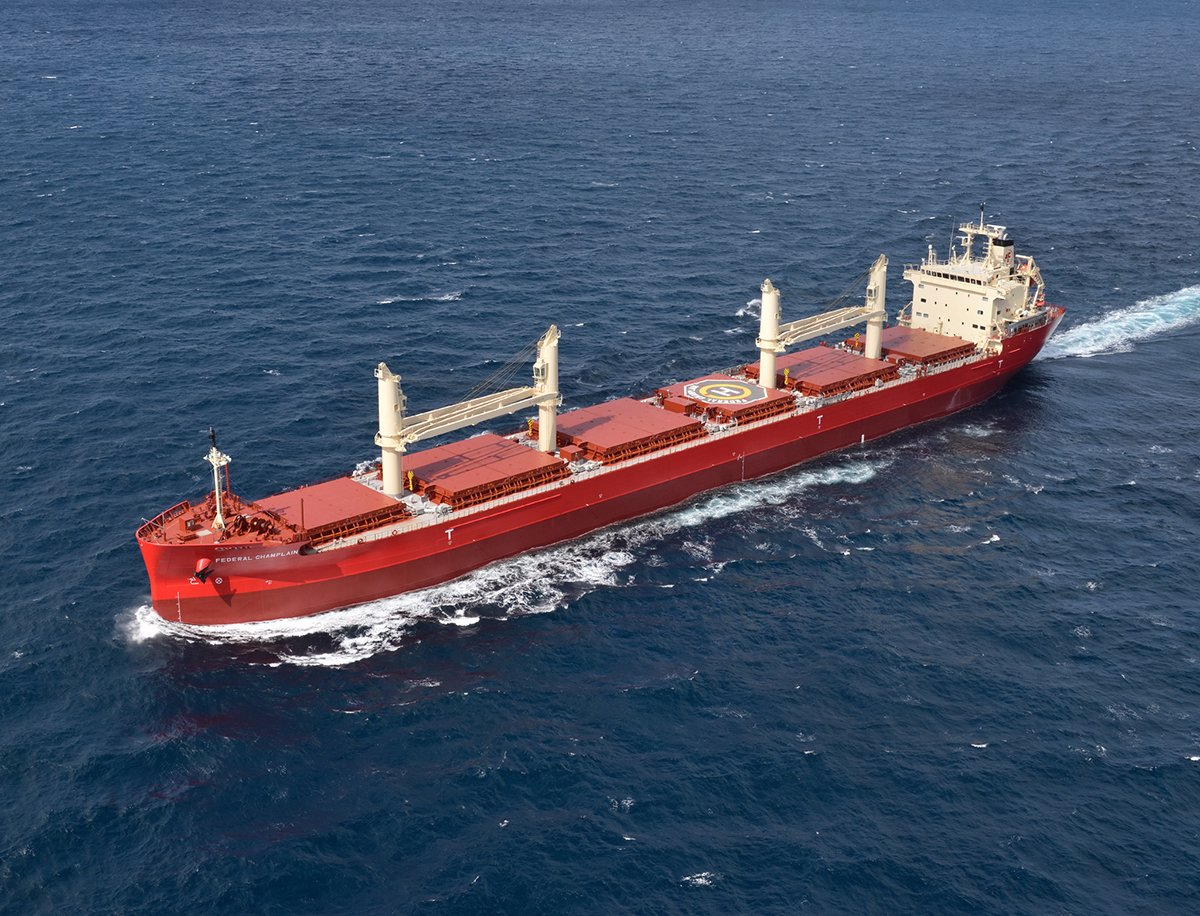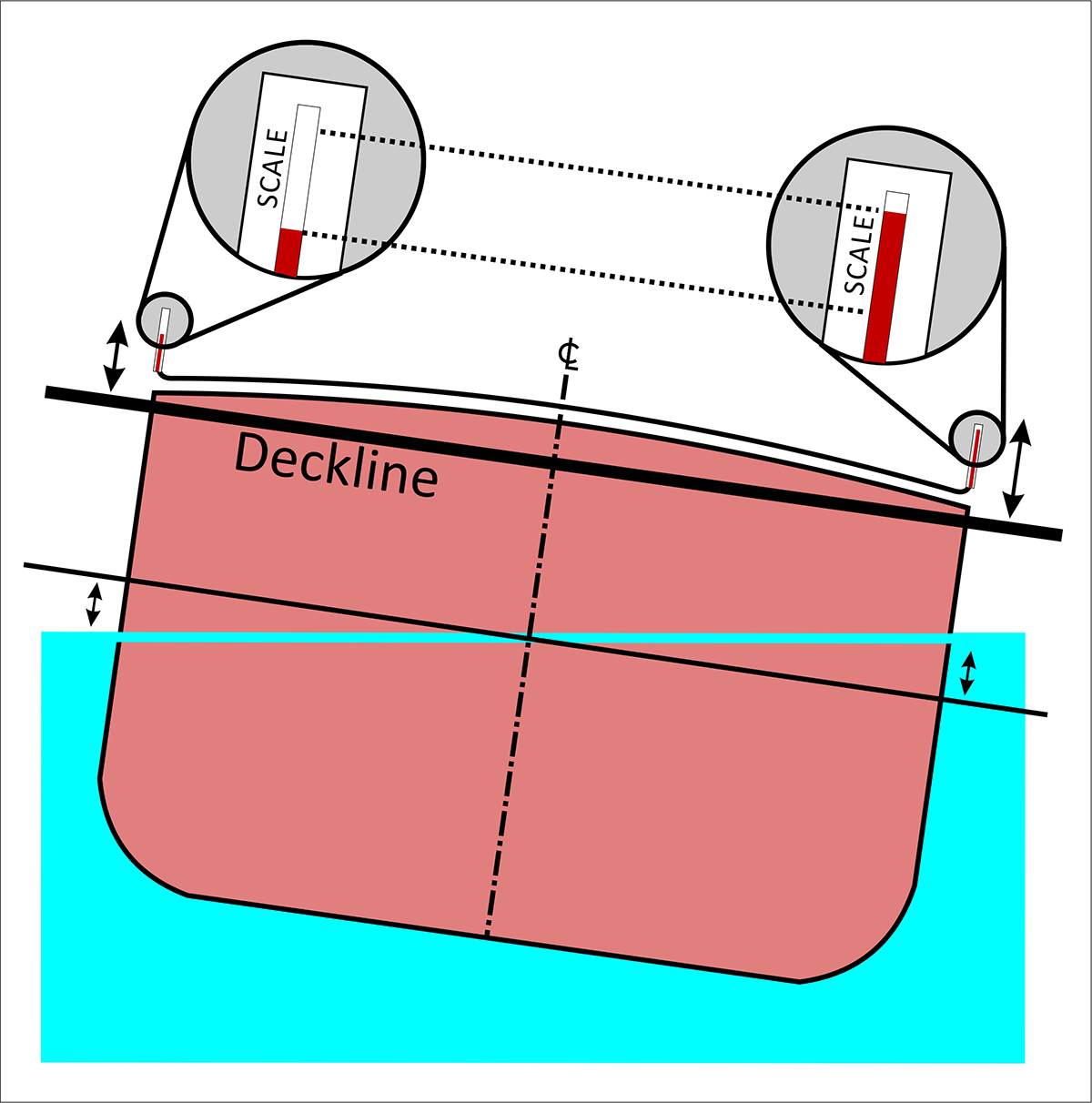Person overboard
Bulk carrier Federal Champlain
Thunder Bay, Ontario
The Transportation Safety Board of Canada (TSB) investigated this occurrence for the purpose of advancing transportation safety. It is not the function of the Board to assign fault or determine civil or criminal liability. This report is not created for use in the context of legal, disciplinary or other proceedings. See Ownership and use of content. Masculine pronouns and position titles may be used to signify all genders to comply with the Canadian Transportation Accident Investigation and Safety Board Act (S.C. 1989, c. 3).
Description of the vessel
The Federal Champlain (IMO number 9671058, registered under the Marshall Islands flag) is a bulk carrier with its bridge, accommodation, and machinery spaces located aft (Figure 1). The vessel is equipped with 1 rescue boat on its port side.
History of the occurrence
On 07 December 2017, at 1754,Footnote 1 the Federal Champlain arrived at Thunder Bay Terminals Ltd. and docked on its starboard side. The loading of potash in bulk began the same day.
On 08 December 2017, at 1700, the third officer was on deck watch for loading operations.
At around 1820, the final loading stage (the trimmingFootnote 2 stage) began. Due to draft restrictions set by the St. Lawrence Seaway Management Corporation, the master planned to finish loading with the vessel on an even keel,Footnote 3 with a maximum draft of 8.08 m.
Because of the cargo's high loading rate (3000 to 3500 metric tonnes per hour) and the seaway draft restrictions, the drafts had to be closely monitored during the trimming stage. The master therefore ordered the chief officer to install a manometer on the main deck centred between fore and aft and extending from port to starboard (Figure 2). The manometer was filled with a solution of water and antifreeze.Footnote 4
The master was in the vessel office to coordinate the trimming stage. The third officer and the cadet were reading the vessel's list on the manometer and the chief officer was on the wharf with the loading operator. They all communicated with ultra high frequency (UHF) radiotelephones.
By 1930, with 700 metric tonnes of cargo to be loaded, the liquid in the manometer began to freeze, resulting in false readings. To continuously monitor the vessel's drafts, the master ordered the chief officer to read the vessel's fore, aft, and amidships draft marks from the wharf. The master also ordered the third officer to read the amidships draft marks on the seaward (port) side using the certified embarkation ladder that was rigged to the port-side guardrail.
Under the supervision of the able seafarer and with access to radio communication, the third officer descended the ladder. The third officer then sat on the second-last step of the ladder, with the soles of his boots pressed flat against the vessel's hull and his legs straight as he braced himself against the vessel's side. He was sitting 1 m above the water and an estimated 6 m from the main deck. He was wearing winter clothes and a harness with a lifeline that was attached to the guardrail. A lifebuoy and a personal flotation device were available on deck near the ladder. He continuously monitored and regularly reported the vessel's draft to the master.
At 1950, the third officer informed the master that he was feeling uncomfortable, and asked to return to the main deck. The master told the third officer to come up and asked the chief officer to relieve him. The third officer tried to move from his position to climb up the ladder. The able seafarer reported to the master that the third officer was unable to come up on his own. The able seafarer was holding the third officer with the lifeline to prevent him from falling in the water. The master immediately sent the chief officer to assist and stopped the loading operations.
Shortly thereafter, the chief officer arrived on site. Because the third officer was unable to hold onto the ladder, the able seafarer lowered the lifebuoy into the water. The third officer told the chief officer and able seaman that he was in severe pain, and asked them to slack the lifeline. Once the line was slack, the third officer gradually entered the water; he then put the lifebuoy around his neck and floated on his back.
Soon after, the master arrived on site and assessed the situation, then went back into the accommodation space and used the UHF radiotelephone to order crew members to lower the rescue boat. The master then informed the loading operatorFootnote 5 of the situation, and requested shore assistance and an ambulance. Shore personnel then launched a small craft from the terminal.
At 2008, the chief engineer, who was already on the bridge, sounded the vessel's emergency alarm.
At 2010, the master used the public address system to inform all crew members of the situation and to order them to assist with lowering the rescue boat.
By 2014, the vessel's rescue boat was lowered with 4 crew members on board. The rescue boat reached the third officer at the same time as the small craft from the terminal, and the third officer was rescued by personnel in the small craft.
At 2027, the third officer was transferred to an ambulance and was transported to Thunder Bay Regional Hospital, where he was treated for moderate hypothermia. He was released from the hospital a few hours later.
Environmental conditions
By 2000 on the day of the occurrence, the air temperature was −12.1 °C with a wind chill of −14 °C. The winds were calm, the water temperature was −2 °C, and no ice was observed on the water in the harbour. The sky was overcast, and visibility was 5 nautical miles.
Previous occurrences involving draft measurements
Since 2013, 3 occurrencesFootnote 6 have been reported to the TSB that involved a crew member taking seaward draft measurements. Of these 3 occurrences, oneFootnote 7 is currently the subject of a Class 3 TSB investigation: on 29 September 2017, the third officer of the general cargo vessel Amazoneborg was taking draft measurements on the seaward side of the vessel in the Port of Trois-Rivières, Quebec, and was later reported missing. The disappearance was reported to search and rescue authorities, and the third officer's body was recovered about a week later near Champlain, Quebec.
Safety message
The investigation revealed the following unsafe conditions on board the Federal Champlain that affected the crew's health and safety:
- The ladder was used to take draft measurements because the water/antifreeze solution in the manometer had frozen. Consequently, the third officer had to sit on the ladder's aluminum steps for 20 minutes in cold weather, and his ability to move was restricted.
- The crew members on deck were unable to recover the third officer by using the lifeline.
- Neither the Federal Champlain's risk assessment for working overboard nor its permit to work overboard include provisions for recovery or rescue in case of emergency while working overboard.
Safety action taken
Following the occurrence, the company took the following actions:
- The company conducted an internal investigation into the occurrence and released its report on 25 December 2017 to share the lessons learned with the officers of the fleet.
- Crew members on the Federal Champlain underwent a detailed briefing and training session in which they were advised of the importance of following cold-weather precautions. During training, it was emphasized that the use of a ladder to read draft marks in cold weather should be kept to a minimum, and a manometer should be used for monitoring the vessel's list. The crew was also encouraged to use a small craft for reading seaward draft marks in cold weather.
- This occurrence was discussed during subsequent briefings for relief crew members.
This concludes the TSB's limited-scope investigation into this occurrence. The Board authorized the release of this investigation report on . It was officially released on .

